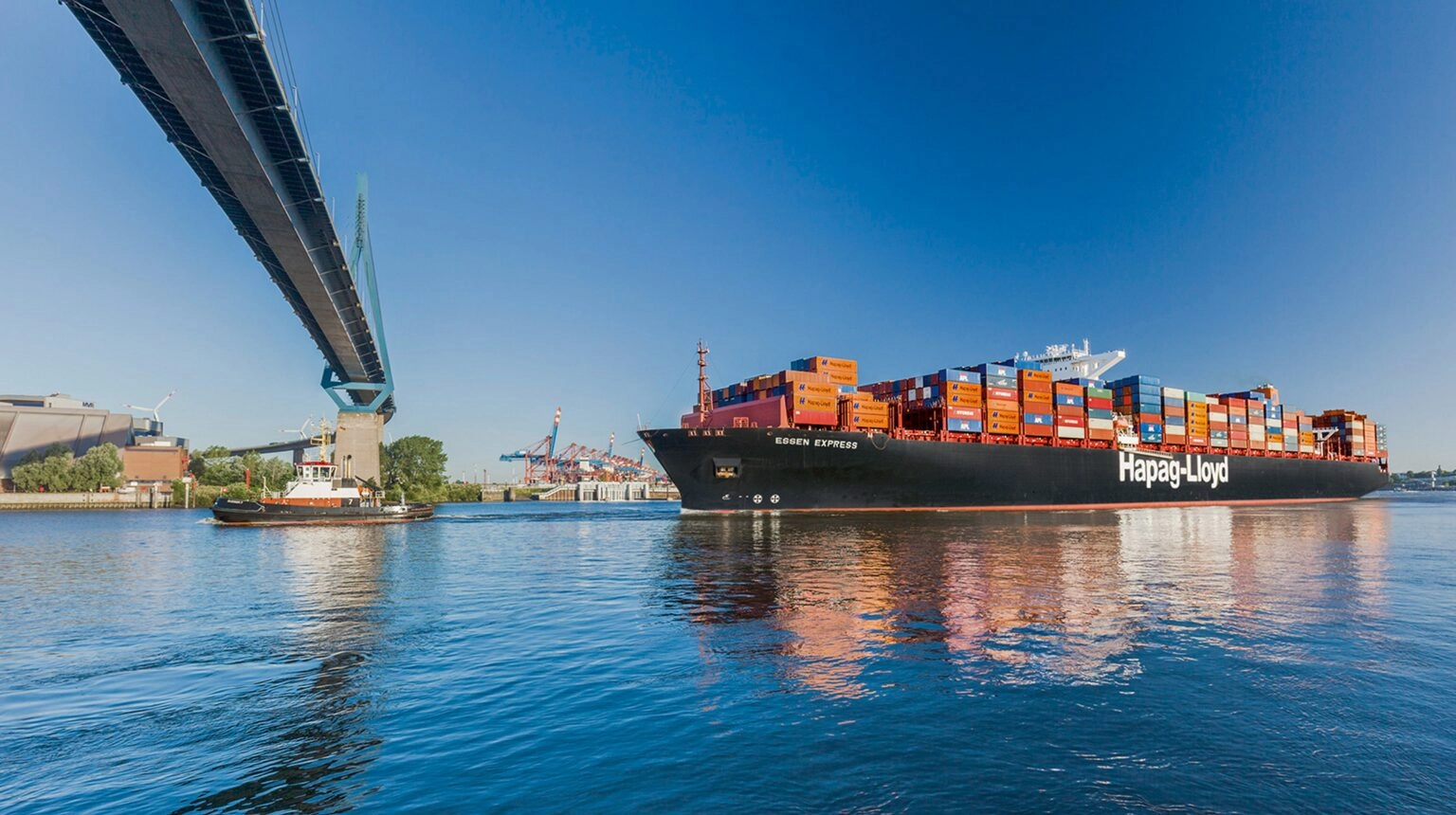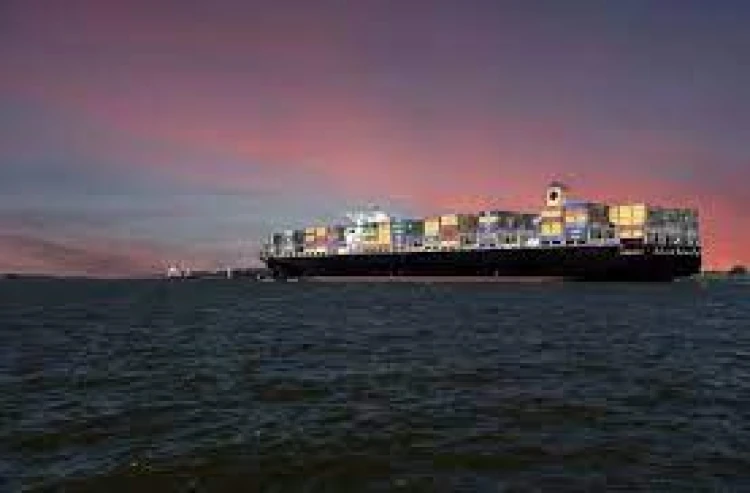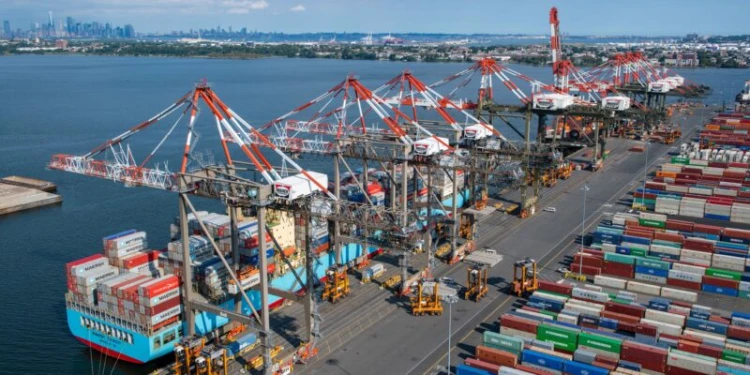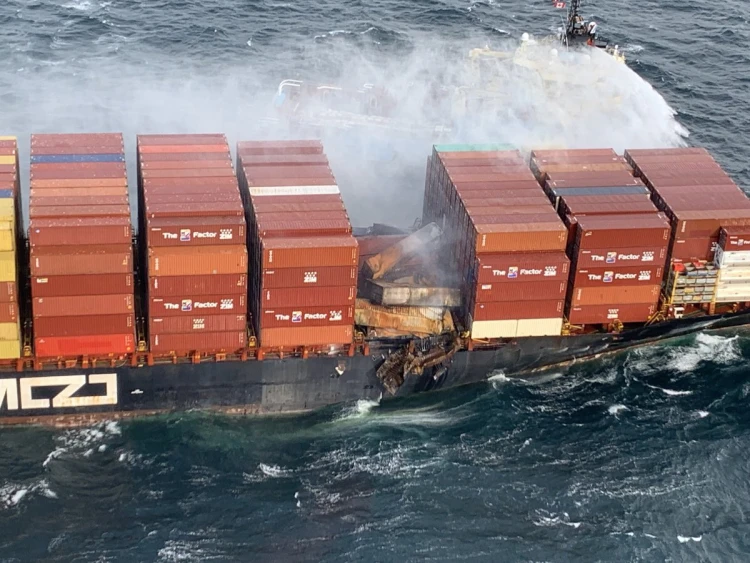Trans-Atlantic shipping suffers ‘meltdown’ as rates hit new low
Tuesday, 14 November 2023

The bigger they come, the harder they fall. The shipping boom in the trans-Atlantic market was one of the world’s biggest, and spot rates in this trade have not only plummeted from COVID-era highs, they’ve sunk below pre-pandemic levels.
“It is probably the deepest and fastest decline I have seen in my history [in the business],” said Thorsten Meincke, head of ocean and air freight at German freight forwarder DB Schenker, during an online panel discussion Tuesday.
According to Peter Sand, chief analyst at freight-rate data provider Xeneta, “This is a major meltdown for a trade that was steady and ‘dull’ for decades before suddenly becoming the poster boy of the container freight market in 2022, defying gravity with elevated rates for a long time after the rest of the market had crumbled.”
Israel-based ocean carrier Zim (NYSE: ZIM) is benefiting from the recent jump in spot rates in the trans-Pacific, but its CFO, Xavier Destriau, stressed that these gains are being offset by falling rates in the trans-Atlantic.
“There is intensified pressure in the Atlantic trade lane,” warned Destriau on Wednesday’s second-quarter earnings call. “It had been extremely resilient up until recently. Today, it is under severe pressure.” The trans-Atlantic accounted for 13% of Zim’s volumes in the first half.
Jefferies analyst Omar Nokta also cited fallout from markets like the trans-Atlantic. Zim’s rate gains in the trans-Pacific are “offset by weakness elsewhere,” said Nokta. “Simply put, gains are needed outside the trans-Pacific for Zim’s earnings to turn green.”
Carriers poised to pull capacity
Germany-based ocean carrier Hapag-Lloyd is heavily exposed to the trans-Atlantic market. According to analytics group Alphaliner, Hapag-Lloyd is the second-largest carrier in the Europe-U.S. market, with a 20% share as of July 1. Only MSC is bigger, with a commanding 38% share. The Atlantic trade accounted for 18% of Hapag-Lloyd’s first-half volumes, the company said in its latest earnings release.
Hapag-Lloyd CEO Rolf Habben Jansen addressed Atlantic shipping weakness in both the Aug. 10 quarterly call and Tuesday’s online panel discussion with DB Schenker.
“The Atlantic has gone to a very, very low level,” he said. Asked whether sailings need to be canceled as a result, Habben Jansen replied, “We’re actively looking at that. In some cases, we don’t earn back our costs. We need to do things to keep our costs under control. I wouldn’t be surprised if we do something fairly soon.”
Alphaliner highlighted the rise and fall of the Europe-U.S. trade in a recent report. “As soon as the big east-west trades — from the Far East to North America and Europe — cooled down after the COVID-19 pandemic, carriers began shifting capacity to the Europe-North America trade, where ocean rates were much higher,” Alphaliner recounted.
The incremental tonnage chasing high trans-Atlantic rates led to overcapacity in relation to demand, pushing rates back down, which should ultimately drive vessels back out of the trade — a textbook example of competitive shipping markets in action, and the business adage: “The best cure for high prices is high prices.”
MORE NEWS : MSC Partners with Valencia to Expand Med’s Busiest Container Port
“The party is over for liner operators [in the trans-Atlantic],” wrote Alphaliner. “MSC, which is by far the largest carrier in this trade, has already started to remove tonnage.”
Spot rates down double digits vs. pre-COVID levels
How far have trans-Atlantic rates fallen? Different index providers give different numbers, but they all show the same precipitous collapse to levels below the pre-pandemic “normal.”
According to the Drewry World Container Index (WCI), spot rates from Rotterdam, Netherlands, to New York peaked in early November 2022 at $7,426 per forty-foot equivalent unit. In the week ending Thursday, they had fallen 79% from that high, to $1,577 per FEU. Compared to pre-COVID rates, the current WCI assessment is 20% below levels at this time in 2018 and 33% below levels in 2019.
Looking even further back, the current WCI Rotterdam-New York spot assessment is lower than at any point in at least 12 years. (Drewry’s data on FreightWaves SONAR only goes back to 2011.)
chart of trans-Atlantic spot rates
Weekly spot rate in USD per FEU. (Chart: FreightWaves SONAR)
The Freightos Baltic Daily Index (FBX) Europe-East Coast spot assessment peaked at $10,708 per FEU in early June 2022. As of Wednesday, it had fallen 88% from that high to $1,236 per FEU. According to the FBX, trans-Atlantic westbound rates have been below pre-COVID levels since late June. They were 29% below 2019 levels on Wednesday.
Daily spot rate in USD per FEU. Blue line: 2023. Purple line: 2019. (Chart: FreightWaves SONAR)
Trans-Atlantic contract rates more than double spot rates
Xeneta tracks both short-term (spot) and long-term (contract) rates. Xeneta’s data shows the same crash in spot rates, but also, that contract rates remain much higher than pre-COVID levels and much higher than current spot rates.
Xeneta put average spot rates in the North Europe-East Coast lane at $1,510 per FEU as of Thursday, down 83% from the peak of $8,793 per FEU in mid-May 2022 and down 35% from spot rates at this time in 2019, pre-COVID.
In the trans-Pacific, Xeneta data shows that spot rates have recently risen above contract rates. The trans-Atlantic is seeing the exact opposite dynamic.
Thursday’s average long-term rate in the North Europe-East Coast lane was assessed at $3,378 per FEU, more than double spot rates (124% higher) and 77% above contract rates at this time in 2019.
(Chart: Xeneta)
This implies that carriers are still doing exceptionally well in the trans-Atlantic to the extent they’re moving contract volumes, not spot cargoes.
However, it also suggests a major risk to carriers’ contract business. When contract rates far exceeded spot rates in the trans-Pacific during the second half of 2022, many shippers switched their cargo to the much-cheaper spot market. Some carriers, including Zim, agreed to slash annual rates in midcontract to keep their volumes. The current spread in the trans-Atlantic implies the same threat to contract business in this lane.
Source : www.freightwaves.com

06 January 2025
Hurricane Beryl trims cargo volumes in Houston and New Orleans

25 January 2025
Container freight rates tumble

08 February 2025

